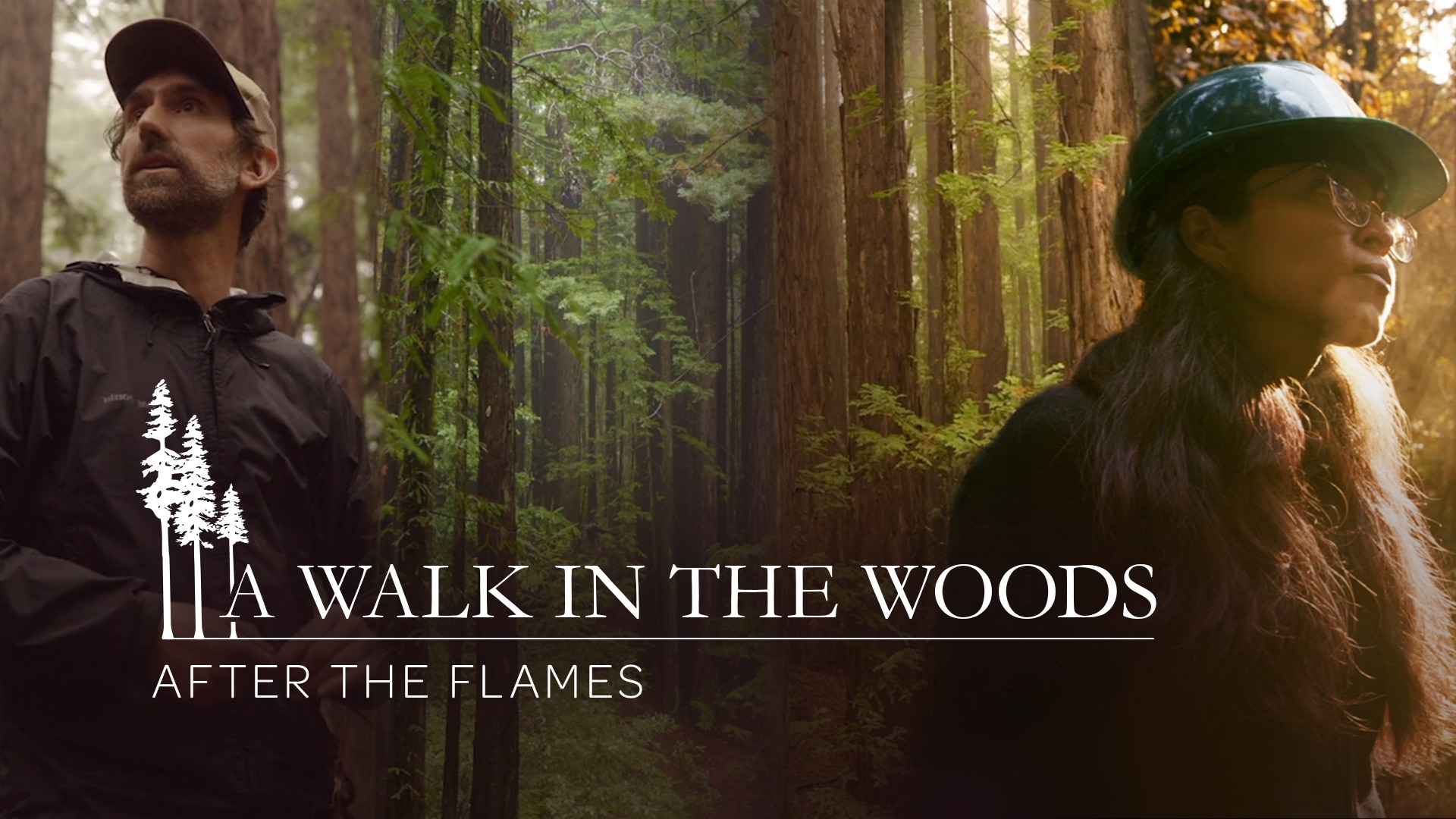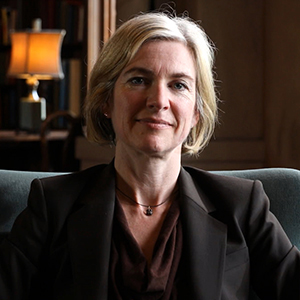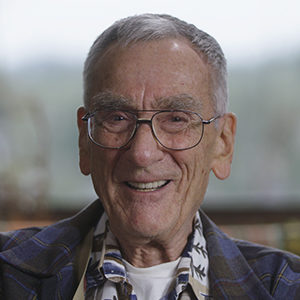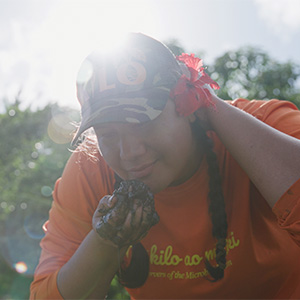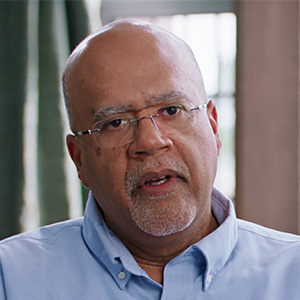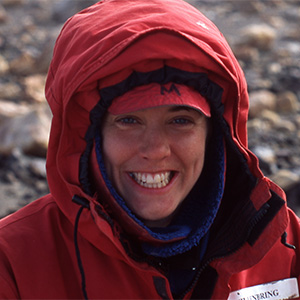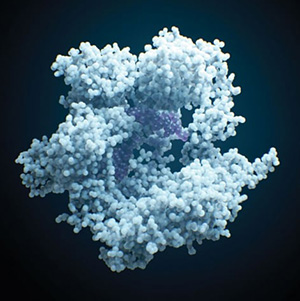Host: Welcome to “What the Docents Know,” your insiders’ guide to Big Basin Redwood State Park in the Santa Cruz Mountains of California’s Central Coast. I had the pleasure of talking with Portia Halbert. Portia has been working with the California State Park System for 19 years.
Portia Halbert: In the last, I think, five years, we’ve had 10 of the most devastating wildfires in the State of California.
Host: Does that raise your anxiety at all about the potential for something catastrophic?
Halbert: I think we’ve been really lucky to avoid something very extreme here in the Santa Cruz Mountains.
I think we can go this direction. There is a unattributed quote,”Every landscape in California either is burning, has burned, or will burn.” I think there was something like 11000 lightning strikes. We had a wind pick up. It took the three fires that were burning all around Big Basin and it just pushed. It just pushed the fire right through the park. We’ve had other coworkers say, “You fire people why didn’t you tell us that it was coming for us?” It was really inconceivable. It just happened very very quickly.
Christian F. Schwarz: I thought that Big Basin would never burn. There was no way it could ever burn. Big Basin is really the core wild area that my heart had gotten to know. Every time I went back after the fires there was some amount of unfamiliarity in places that I otherwise would’ve said I knew like the back of my hand. The place had changed visually so much that I couldn’t find my way. I don’t know what to expect because I have no benchmark for a high-intensity redwood forest burning. This is the only one I’ve ever seen and it’s the only one most people have ever seen.

Narrator: The redwood trees of California are probably the oldest of living things. All of the world’s history since Christ was born could’ve occurred during the life of perhaps one of these redwoods. Down they come some of the world’s oldest biggest and tallest trees. But don’t think these giants are being completely destroyed. Many of the oldest and the biggest of the redwoods are being saved.
Halbert: Around the end of the 1800s, people started to recognize that these beautiful forests that they were slowly disappearing. The heart of the last of the redwood habitat is right here in the Santa Cruz Mountains. As the first state park Big Basin was the first piece that was protected.
On our left here is where the old-growth redwood loop is located. It was located. This is a one-mile loop that takes you around to see some really beautiful different features on redwood trees. This is where they would have campfire presentations. Every night of the summer they would have some sort of program here. We’ve got 200-plus campsites in this park. Or, sorry, we had. We had a lotta campsites here.
Don Hankins: I have been around fire pretty much my whole life. You learn to read the landscape. Like what are the daily patterns of wind that come through? Is this what we’re hearing right now coming through, is this normal or is this linked to a storm that’s coming in?
There were a lot of uses of fire by Indigenous peoples, such as Ohlone communities along the coast. They would see that, “Oh the health of the grass is declining. We need to burn.” Or, “We’re getting too much litter accumulation on the forest floor.”
The policies of fire suppression dates back to about 1793. And that proclamation forbid Native people from burning and applied the harshest penalties to it. When California was settled as a state in 1849, 1850, there were also policies that the state had imposed against burning specifically to tribal people. So we’re basically looking at 200 and almost 50 years of fire suppression. This is a consequence of it.

Schwarz: Fire changes everything. It really changes how plants interact with the soil, how fungi interact with the soil. Find the moisture find the mushrooms. Here’s a little smorgasbord of fire-following fungi right here.
Look at there’s this little seep here, where the moisture is coming out of the hillside and that’s where all the fungi are. These are Geopyxis pixie cups, a little stalked cup fungus that is pretty abundant after forest fires especially up in the Sierra. I don’t think I’ve ever seen them in Santa Cruz until just now.
Holy moly. So this is called a cabbage head fungus pretty much known from burned areas. Not really a mushroom you expect to see otherwise. And just look at it. I mean it is a striking creature. It’s having an amazing year across the state. People are finding it everywhere because of all the burns. More than probably has ever been seen before.
Halbert: One of the things that you notice if you spend some time in the redwood forest, you’re like, “Well where are all the young trees?” They just cannot get established when the duff and the leaf litter is a foot or two thick. You need to have something like a flood or a fire to burn up a bunch of the duff and leaf litter so that the seeds can get established. They’re all over. They’re like in every direction I’m looking. I’ve never seen this before. Tens of thousands of seeds germinating, all from this one event pretty cool.

We don’t have a lot of money historically for our burn program and now, hopefully, we’ll be receiving wildfire and forest resiliency money in the next five to 10 years. We’ll have the opportunity to do a lot of things differently.
Hankins: If we put the right fire in the right places at the right times, we won’t see this kinda loss. In our society we’ve kinda got this idea that fire is so bad for everything. What we see is that the world around us is really resilient and for wildlife, there’s a lotta benefits that come from it.
She’s a cavity-nesting duck. She’s a merganser. It’s really good for her to probably be in this forest because there’s lots of potential for cavities now to be in some of these trees and she’ll have places to nest in and her chicks can come down here and use this creek too. It’s not always doom and gloom.
Halbert: It will be different for awhile. It will not be what it was, but it’ll be something new.
Scientific American Podcast: A Burned Redwood Forest Tells a Story of Climate Change, Past, Present and Future
Medium: Fire, Good or Bad? Embracing Complexity in Science Film
Producers: Meredith DeSalazar, Kevin McLean, Regina Sobel
Cinematographers: Brian Alberth, Derek Reich
Editor: Rebecca Ellsworth
Graphics: Chris George, Maggie Hubbard
Associate Producer: Shelley Elizabeth Carter
Executive Producers: Shannon Behrman, Sarah Goodwin, Elliot Kirschner



